A long lower wick on today’s daily candlestick supports the short-term outlook for both Elliott wave counts.
Summary: Friday’s high may have been the end of cycle wave b triangle. A downwards breakout may be beginning.
A new target is at 1,014. Thereafter, if price keeps falling, the next target is at 808. Along the way down, a new low below 1,160.75 would add strong confidence in the main Elliott wave count.
For the short term, a small bounce or consolidation may continue here for minor wave 2. The target is about 1,337.
Grand SuperCycle analysis is here.
Last monthly charts are here. Video is here.
MAIN ELLIOTT WAVE COUNT
WEEKLY CHART – TRIANGLE
The basic Elliott wave structure is five waves up followed by three waves back (in a bull market). At this time, the preferred Elliott wave count sees Gold as still within three waves back, which began at the all time high in September 2011.
Five waves up are labelled 1,2,3,4,5. Three waves back are labelled A,B,C.
This wave count sees Gold as now about two thirds through the three waves back. The three wave structure is labelled cycle waves a, b and c.
The triangle for cycle wave b may be complete. Primary wave E may have ended with an undershoot or overshoot of the A-C trend line. If it continues higher, then primary wave E may not move beyond the end of primary wave C above 1,365.68.
Draw a channel about the zigzag of primary wave E using Elliott’s technique. Draw the first trend line from the start of intermediate wave (A) to the end of intermediate wave (B), then place a parallel copy on the end of intermediate wave (A). Now that it is possible that intermediate wave (C) may be over, a breach of the channel by downwards movement would be a strong indication that the triangle for cycle wave b is over and cycle wave c downwards may then have begun.
DAILY CHART – TRIANGLE
It is possible that intermediate wave (C) may be complete in its entirety. Minor wave 4 may have been very brief as was minute wave iv. This follows a common pattern for Gold.
Reasonable confidence that a high is in place would come with a breach of the taupe best fit channel. Thereafter, strong confidence would come with a breach of the black Elliott channel.
Within a new downwards trend, no second wave correction may move beyond the start of its first wave above 1,347.89.
HOURLY CHART – TRIANGLE
If there has been a trend change at cycle degree on Friday, then within the new downwards trend minor wave 2 may not move beyond the start of minor wave 1 above 1,347.89.
Minor wave 1 may be a complete five wave impulse. Five steps down should be followed by three steps back. Minor wave 2 would most likely subdivide as a zigzag. The first second wave correction within a new trend is often very deep; minor wave 2 may end about the 0.618 Fibonacci ratio of minor wave 1, or it may be deeper.
The new low today may have been a continuation of minor wave 1. Fibonacci Ratios for minor wave 2 are adjusted today.
DAILY CHART – TRIANGLE – ALTERNATE
It remains possible that intermediate wave (C) within primary wave E may be incomplete. Intermediate wave (C) must subdivide as a five wave structure, and within it minor wave 4 may have again ended at today’s low. Minor wave 5 may now make a new high above the price extreme of minor wave 4.
A target is today calculated for minor wave 5 to exhibit a Fibonacci ratio to minor wave 3. Were minor wave 5 to reach equality in length now with minor wave 1, it would not move above the price extreme of minor wave 4. This target calculation would see minor wave 5 end before the invalidation point.
If it continues lower, then minor wave 4 may not move into minor wave 1 price territory below 1,288.37. Minor wave 4 may be expected to very likely be relatively brief and shallow.
HOURLY CHART – TRIANGLE – ALTERNATE
Minor wave 4 may have again just completed as an expanded flat correction, and within it minute wave c may have extended a little lower today. Within the flat, minute wave b is between the most common range of 1 to 1.38 times the length of minute wave a. Minute wave c has moved below the end of minute wave a at 1,327.34, avoiding a truncation.
A short and sharp upwards breakout would be expected for minor wave 5.
WEEKLY CHART – DOUBLE ZIGZAG
This wave count is identical to the first weekly chart up to the low labelled cycle wave a. Thereafter, a different Elliott wave corrective structure is considered for cycle wave b.
It is possible that cycle wave b may be an incomplete double zigzag or a double combination.
The first zigzag in the double is labelled primary wave W. This has a good fit.
The double may be joined by a corrective structure in the opposite direction, a triangle labelled primary wave X. The triangle may be incomplete.
Within multiples, X waves are almost always zigzags and rarely triangles. Within the possible triangle of primary wave X, it is intermediate wave (B) that is a multiple; this is acceptable, but note this is not the most common triangle sub-wave to subdivide as a multiple. These two points reduce the probability of this wave count in terms of Elliott wave.
It is possible that intermediate wave (D) may be complete.
If it continues higher, then intermediate wave (D) of a contracting triangle may not move beyond the end of intermediate wave (B) above 1,365.68.
Intermediate wave (D) of a barrier triangle may end about the same level as intermediate wave (B); as long as the (B)-(D) trend line remains essentially flat the triangle will remain valid. This is the only Elliott wave rule that is not black and white. In practice, intermediate wave (D) may end slightly above intermediate wave (B) at 1,365.68 and this wave count would remain valid. If intermediate wave (D) is now complete, then the (B)-(D) trend line has only the very smallest overshoot for the end of minor wave B within intermediate wave (C); this is acceptable.
Primary wave Y would most likely be a zigzag because primary wave X would be shallow; double zigzags normally have relatively shallow X waves.
Primary wave Y may also be a flat correction if cycle wave b is a double combination, but combinations normally have deep X waves. This would be less likely.
This wave count has good proportions and no problems in terms of subdivisions.
ALTERNATE ELLIOTT WAVE COUNT
WEEKLY CHART
This wave count sees the three waves back now complete at the last major low for Gold in November 2019.
If Gold is in a new bull market, then it should begin with a five wave structure upwards on the weekly chart. However, the biggest problem with this wave count is the structure labelled cycle wave I because this wave count must see it as a five wave structure, but it looks more like a three wave structure.
Commodities often exhibit swift strong fifth waves that force the fourth wave corrections coming just prior and just after to be more brief and shallow than their counterpart second waves. It is unusual for a commodity to exhibit a quick second wave and a more time consuming fourth wave, and this is how cycle wave I is labelled. The probability of this wave count is low due to this problem.
Cycle wave II subdivides well as a double combination: zigzag – X – expanded flat.
Cycle wave III may have begun. Within cycle wave III, primary waves 1 and 2 may now be complete. If it continues lower as a double zigzag, then primary wave 2 may not move beyond the start of primary wave 1 below 1,160.75.
Cycle wave III so far for this wave count would have been underway now for 43 weeks. It may be beginning to exhibit some support from volume and increasing ATR. If this increase continues, then this wave count would have some support from technical analysis.
TECHNICAL ANALYSIS
WEEKLY CHART
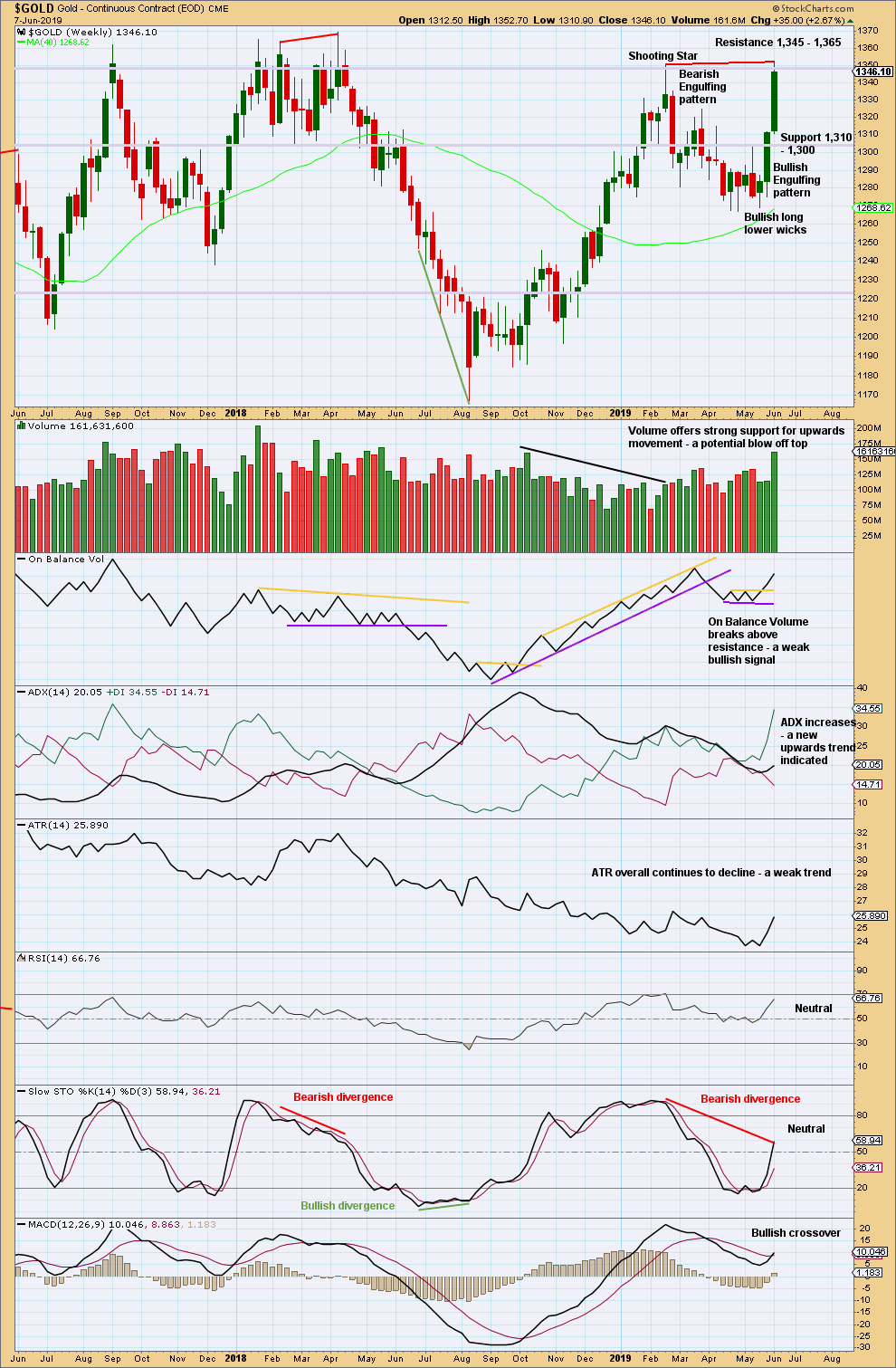
Click chart to enlarge. Chart courtesy of StockCharts.com.
At the last few major highs for Gold (on weeks of 5th July 2016, 5th September 2017, 9th April 2018 and 19th February 2019) the following points are noted:
– Volume was not the strongest for the last upwards week. Some decline in volume accompanied the final high.
– Bearish divergence was seen between price and Stochastics in only two of four of the identified major highs.
– Bearish divergence was seen between price and RSI in only one of four of the identified major highs.
Currently, there is very strong bearish divergence between price and Stochastics: Last week price has made a slight new high, but Stochastics is reasonably lower than it was at the last swing high.
Volume however shows no decline last week. It shows a strong increase. This is rarely seen right at a final high, so some further upwards movement may be reasonably expected. However, a strong bearish reversal pattern on the daily chart today changes this conclusion.
DAILY CHART

Click chart to enlarge. Chart courtesy of StockCharts.com.
At the daily chart level, there is some decline in volume at the last high for Friday. With both RSI and Stochastics extreme and some bearish divergence between price and Stochastics, some consolidation to relieve extreme conditions would be normal to see after the blow off top.
A strong Bearish Engulfing candlestick pattern fully engulfs the prior daily candlestick of the 5th of June, and closes below the real bodies of the 6th and 7th of June. This candlestick offers some evidence that a high may possibly be in place.
For confidence in a trend change a lower low needs to be seen. The last swing low was at 1,275.10 on the 28th of May.
For the short term, a long lower wick today suggests either a bounce or a continuation of the upwards trend here.
GDX WEEKLY CHART

Click chart to enlarge. Chart courtesy of StockCharts.com.
The measuring gap gives a target at 23.39. However, this has already been almost met.
GDX DAILY CHART
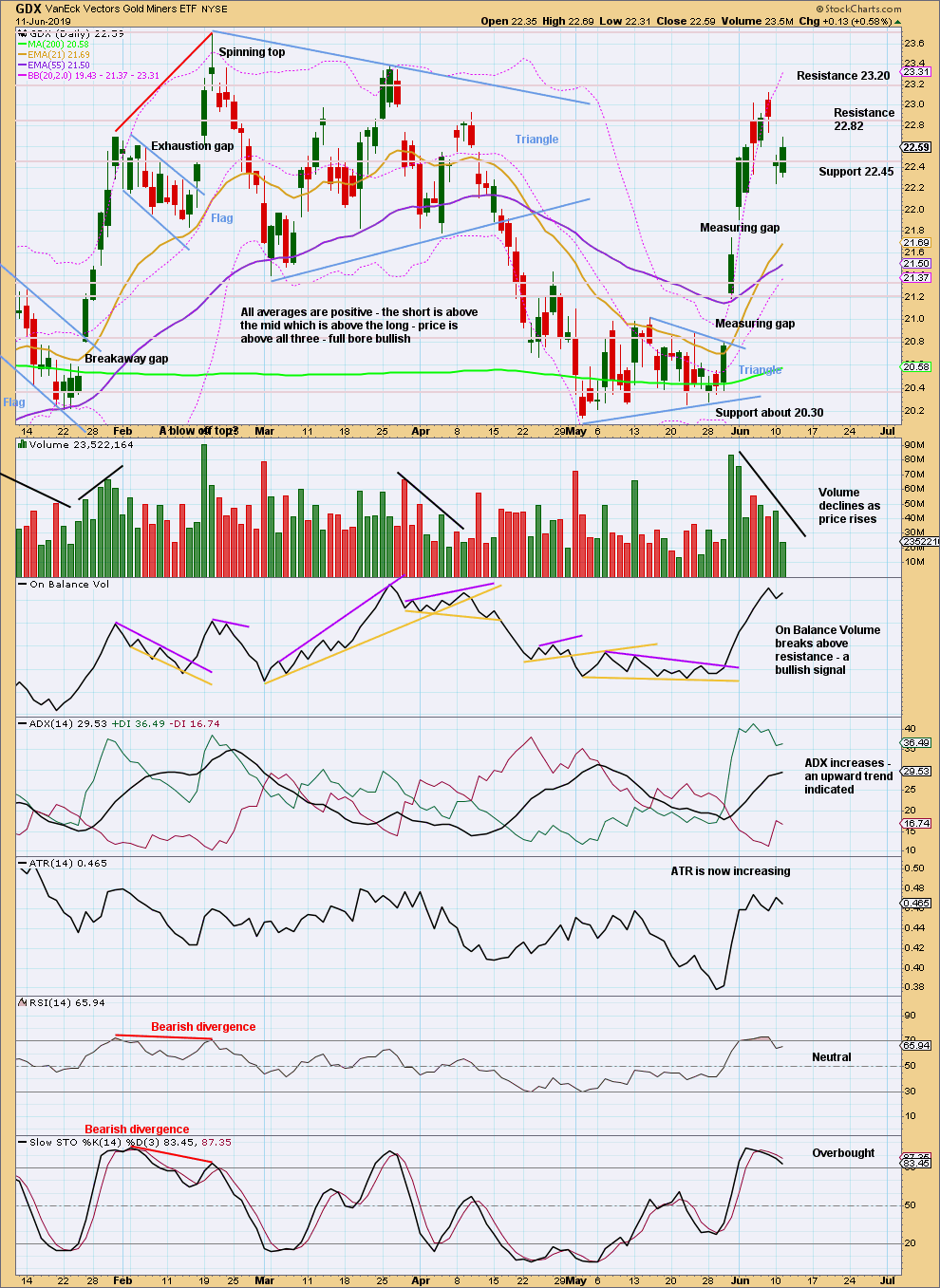
Click chart to enlarge. Chart courtesy of StockCharts.com.
The last measuring gap may now provide support. It may remain open at 21.74.
With both Stochastics and RSI extreme and volume declining, this upwards trend is showing enough weakness at this time for extreme caution to be warranted. The last gap may be either a pattern gap or a breakaway gap. If it remains open, it would be a breakaway gap; if closed, a pattern gap. A breakaway gap should offer resistance at 22.73.
Published @ 8:05 p.m. EST.
—
Careful risk management protects your trading account(s).
Follow my two Golden Rules:
1. Always trade with stops.
2. Risk only 1-5% of equity on any one trade.
—
New updates to this analysis are in bold.

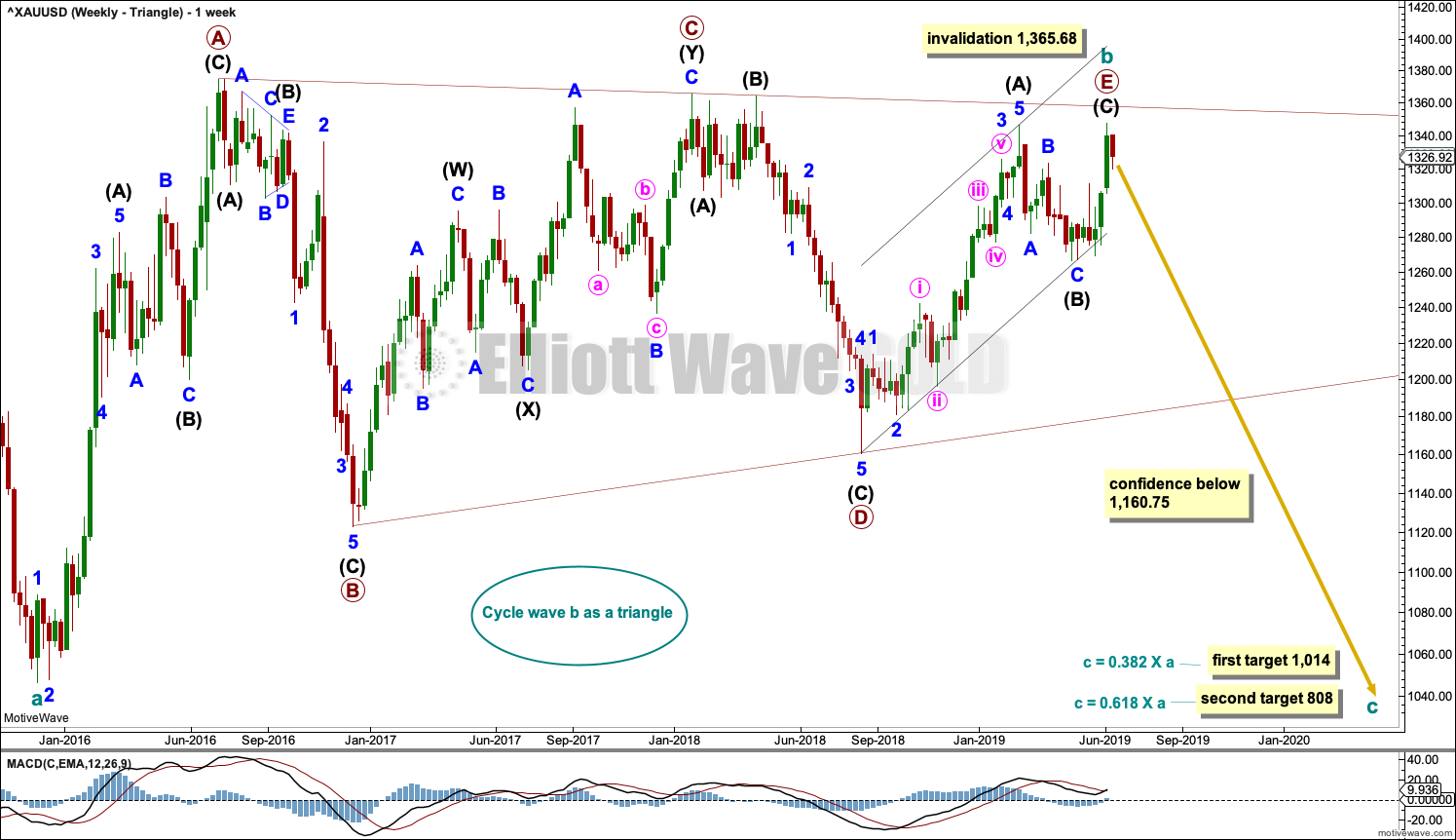
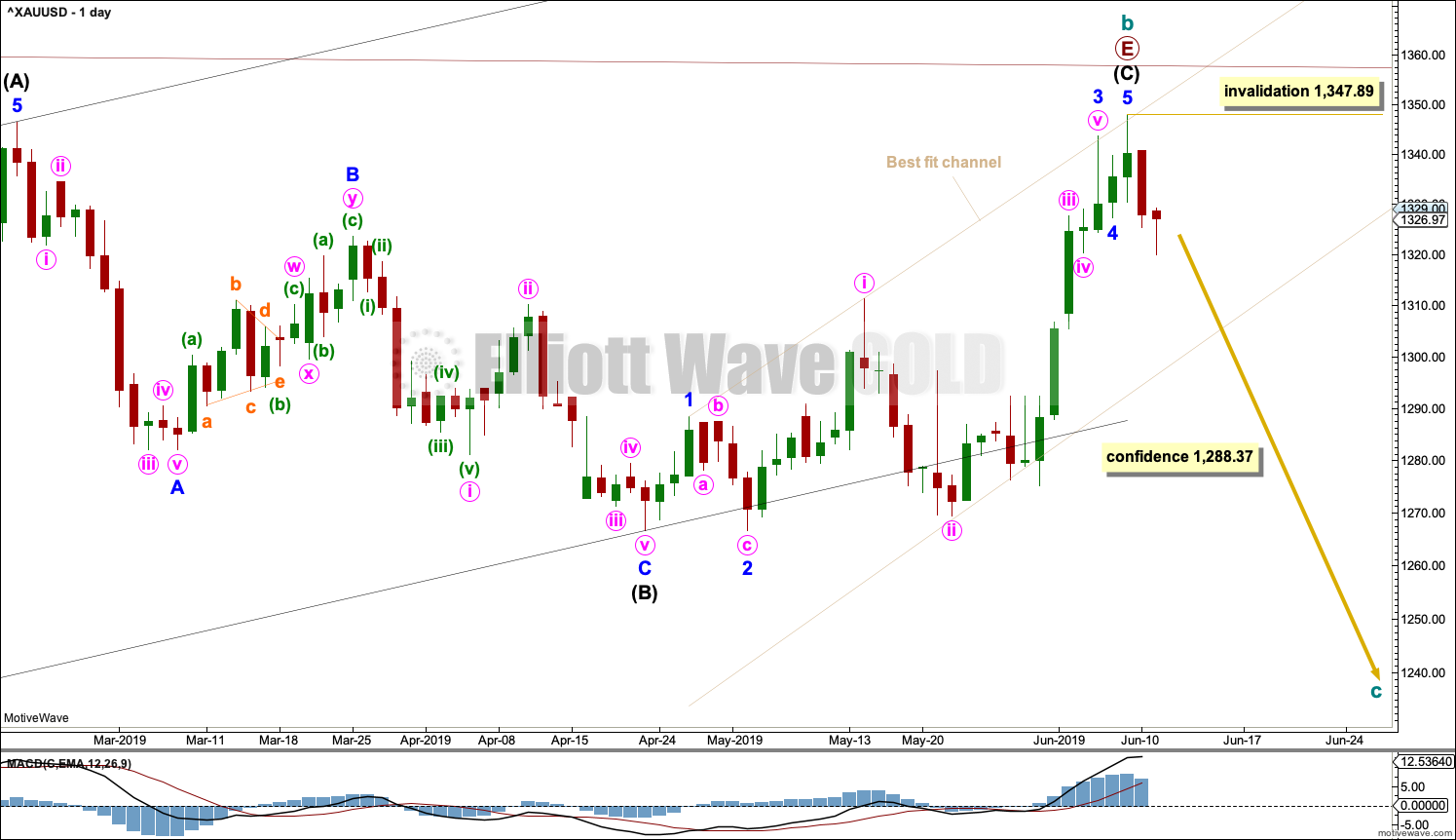
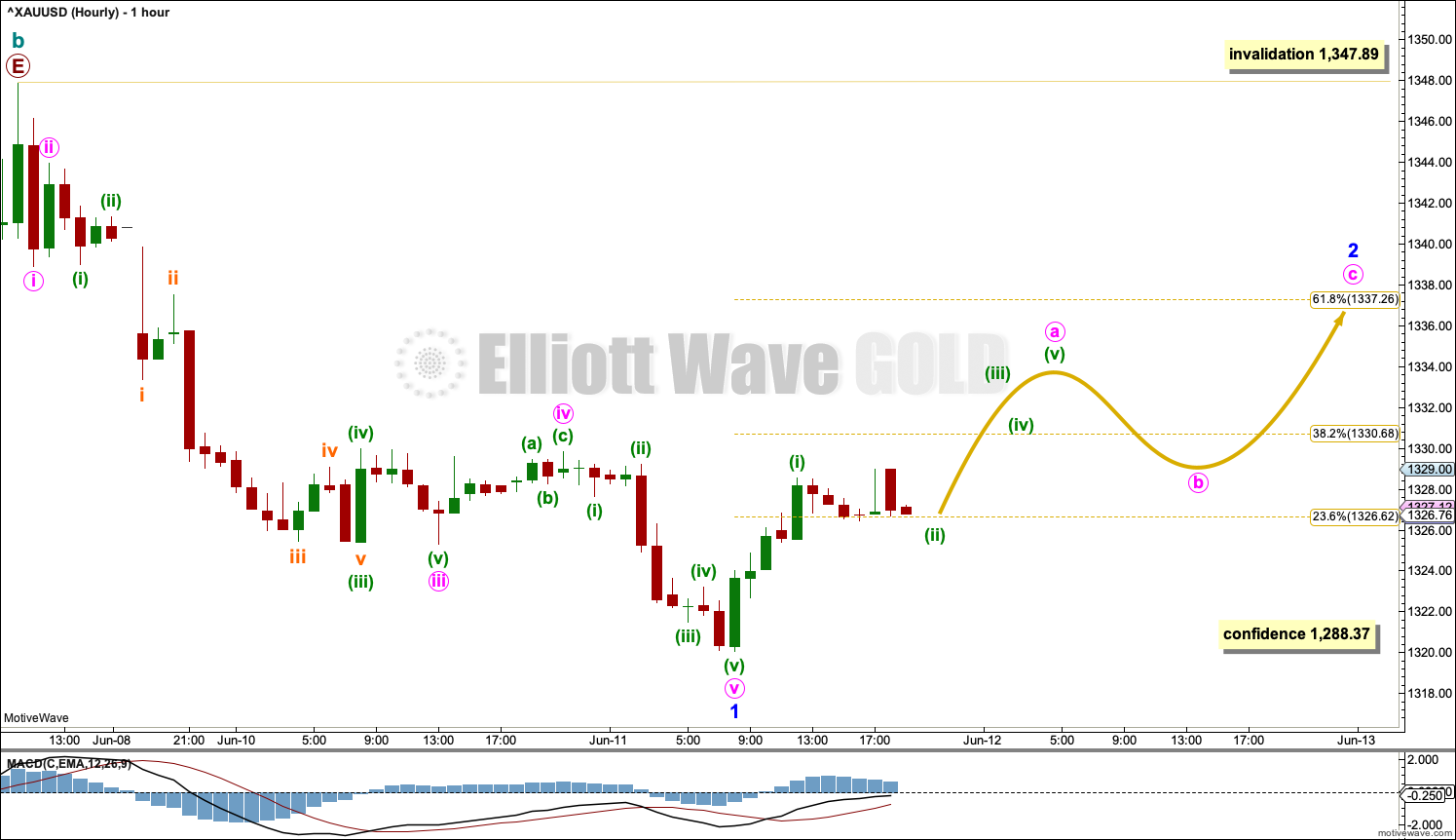
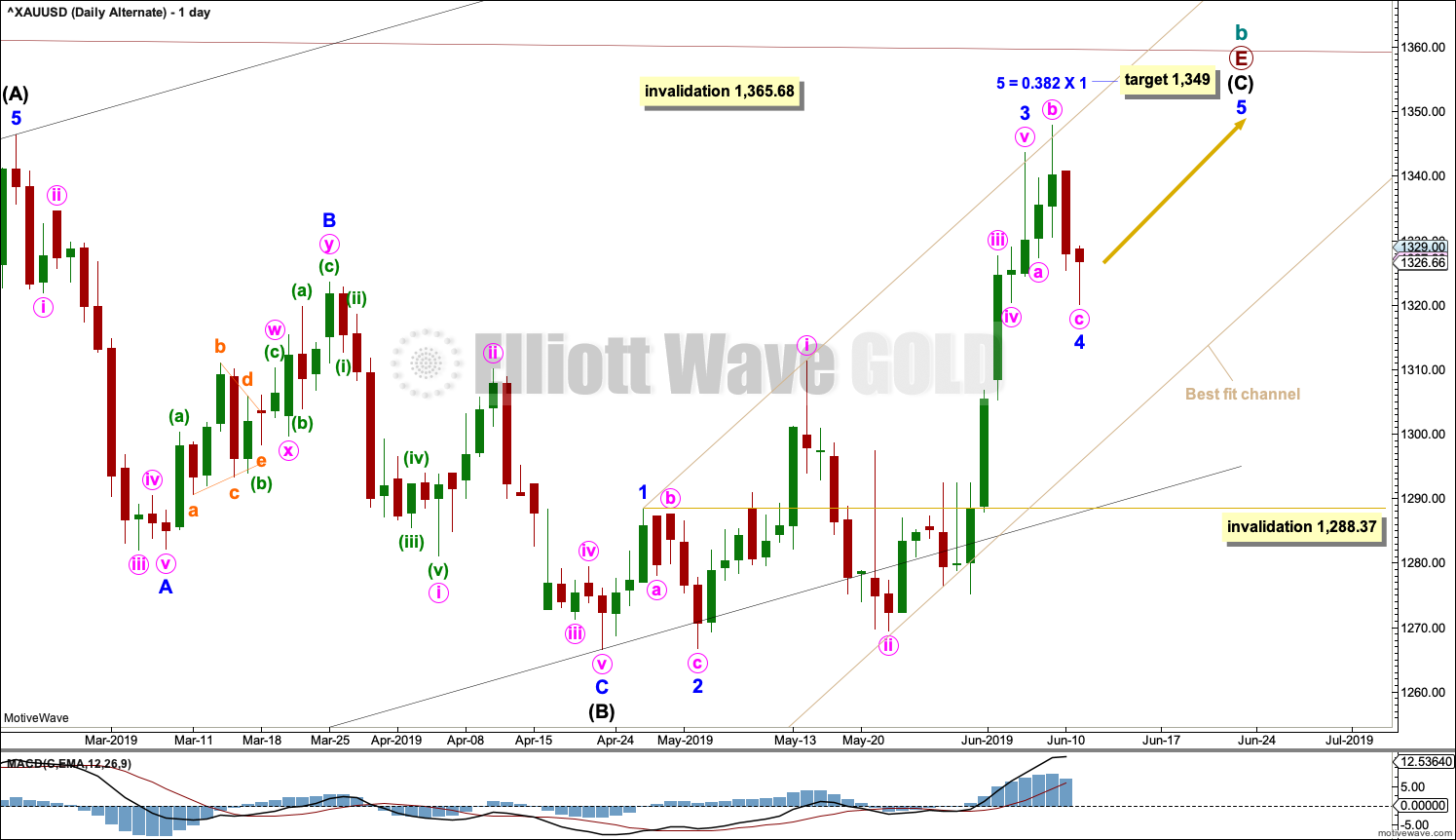
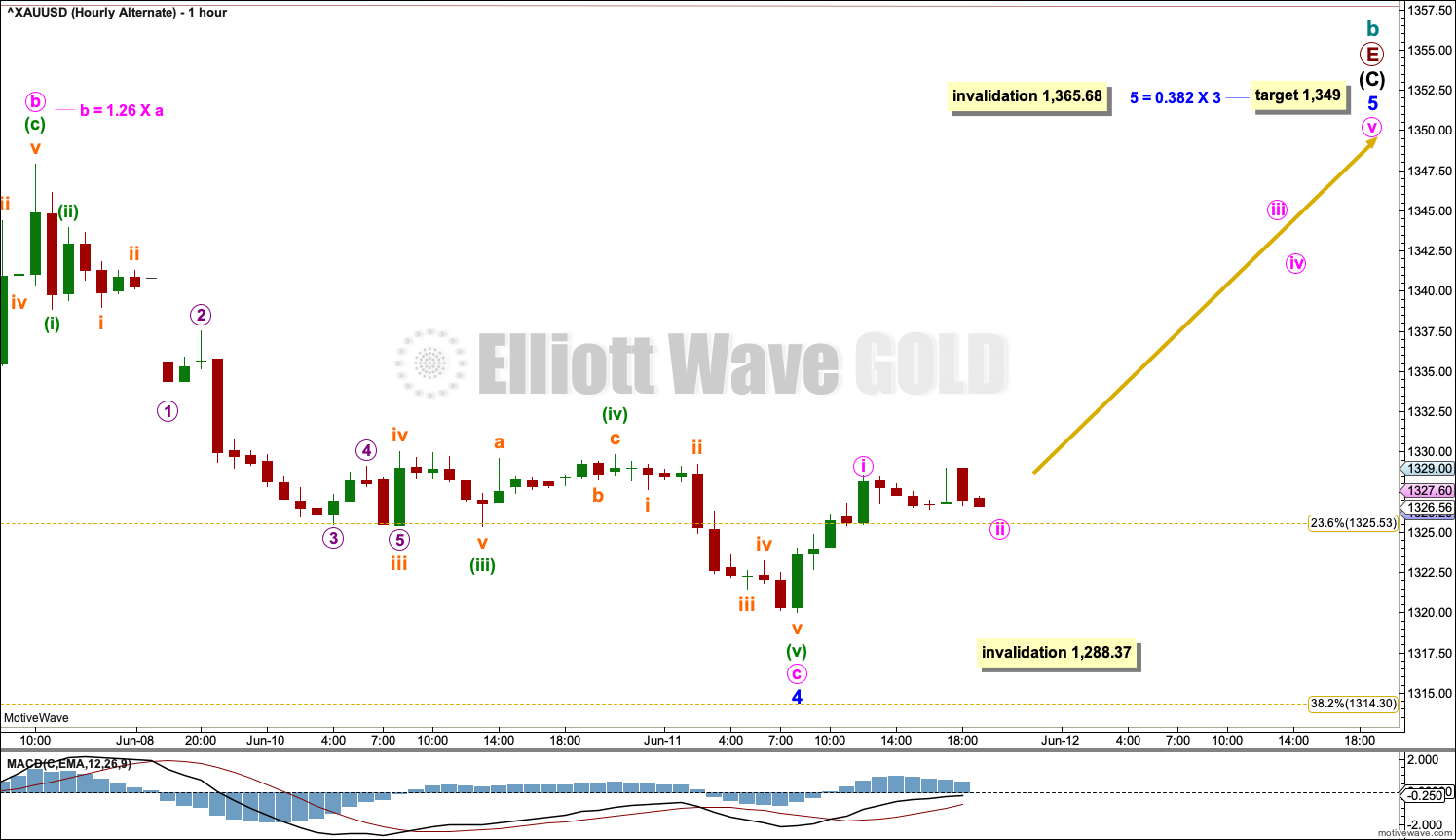

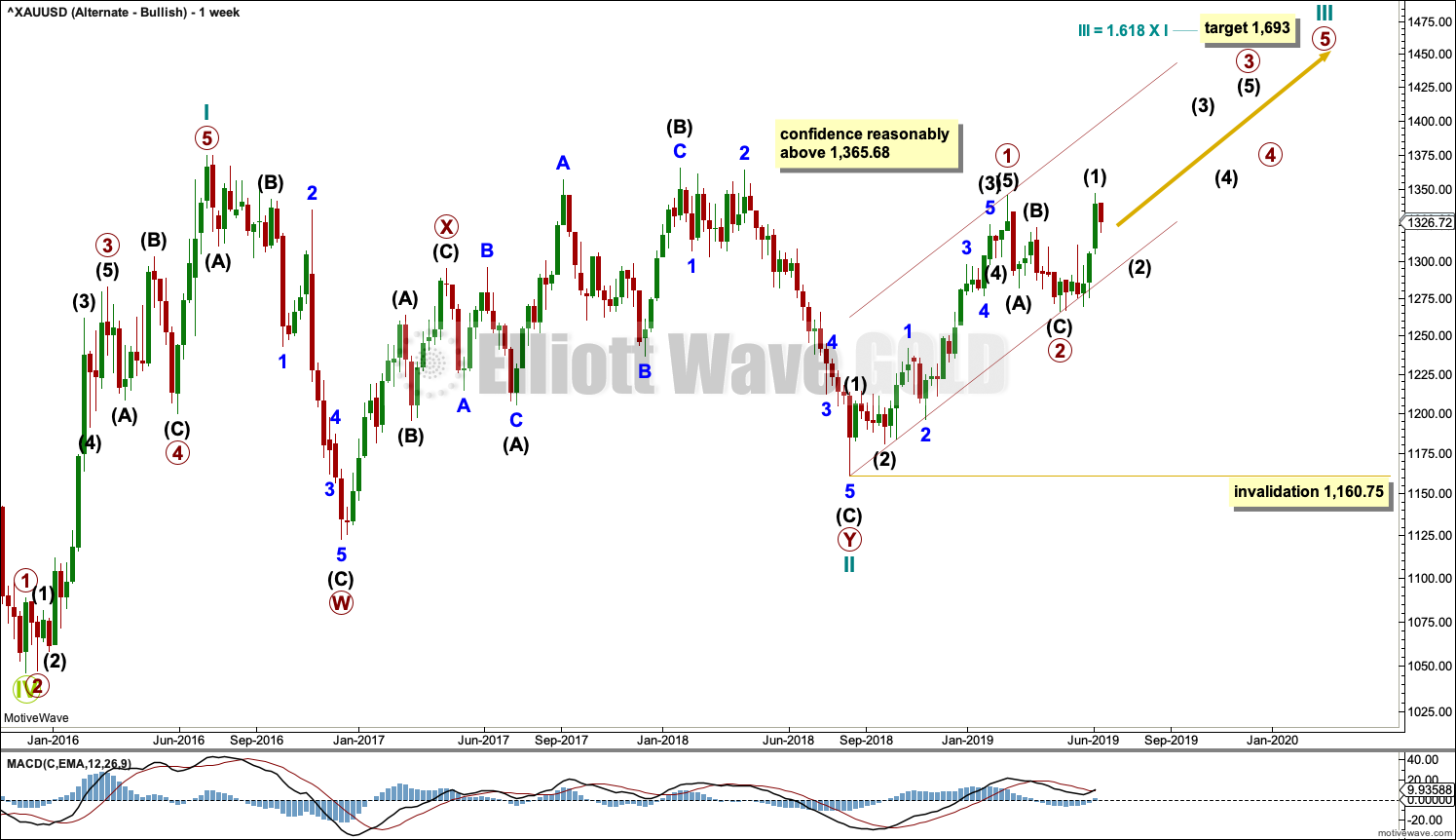
Ended up exactly like your primary hourly chart – triangle, only overshot like 20 pips. With a black pinbar, I’ve placed a short order.
Thanks Lara